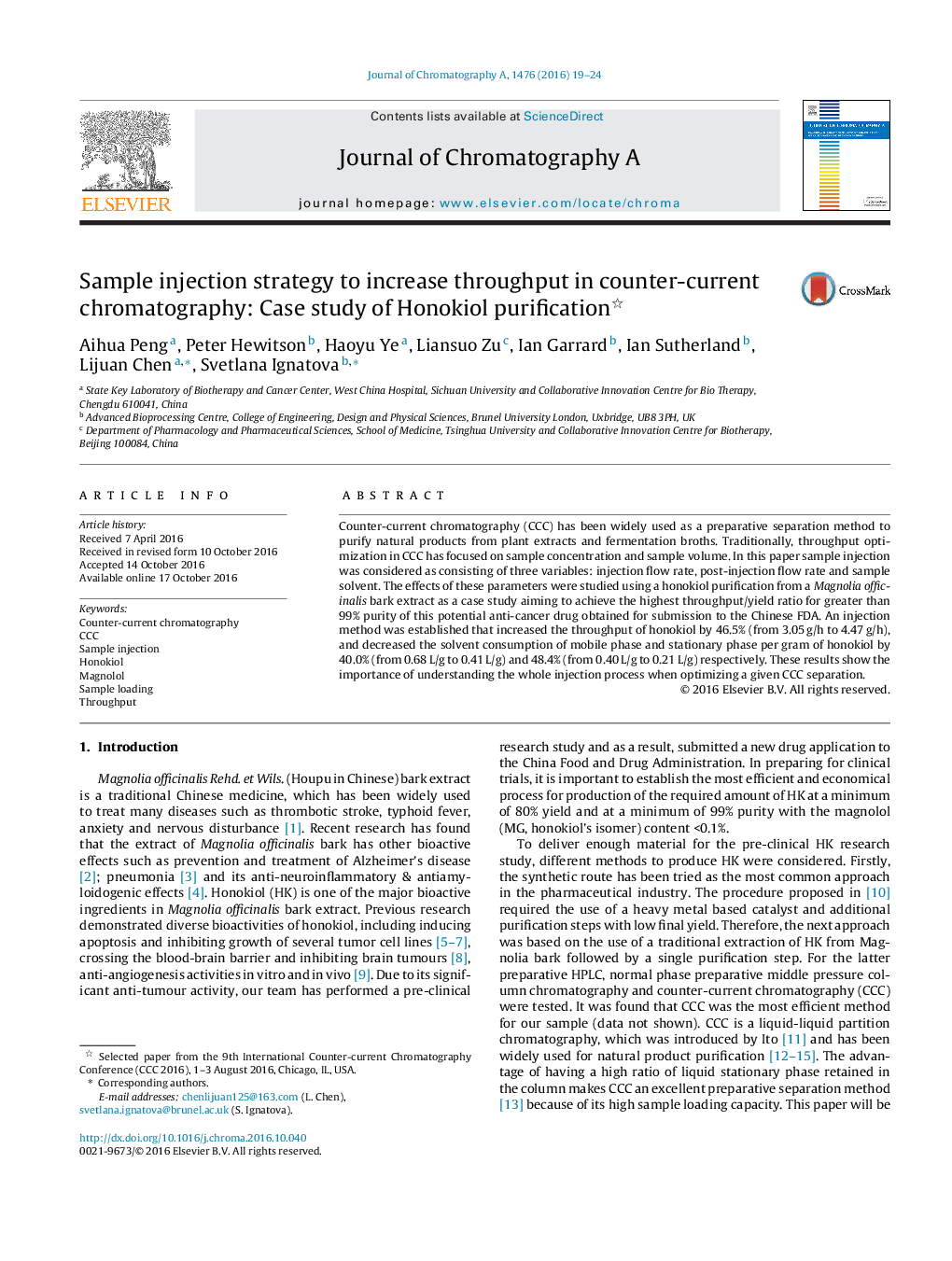| Article ID | Journal | Published Year | Pages | File Type |
|---|---|---|---|---|
| 5135742 | Journal of Chromatography A | 2016 | 6 Pages |
Abstract
Counter-current chromatography (CCC) has been widely used as a preparative separation method to purify natural products from plant extracts and fermentation broths. Traditionally, throughput optimization in CCC has focused on sample concentration and sample volume. In this paper sample injection was considered as consisting of three variables: injection flow rate, post-injection flow rate and sample solvent. The effects of these parameters were studied using a honokiol purification from a Magnolia officinalis bark extract as a case study aiming to achieve the highest throughput/yield ratio for greater than 99% purity of this potential anti-cancer drug obtained for submission to the Chinese FDA. An injection method was established that increased the throughput of honokiol by 46.5% (from 3.05Â g/h to 4.47Â g/h), and decreased the solvent consumption of mobile phase and stationary phase per gram of honokiol by 40.0% (from 0.68Â L/g to 0.41Â L/g) and 48.4% (from 0.40Â L/g to 0.21Â L/g) respectively. These results show the importance of understanding the whole injection process when optimizing a given CCC separation.
Related Topics
Physical Sciences and Engineering
Chemistry
Analytical Chemistry
Authors
Aihua Peng, Peter Hewitson, Haoyu Ye, Liansuo Zu, Ian Garrard, Ian Sutherland, Lijuan Chen, Svetlana Ignatova,
